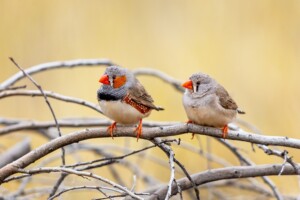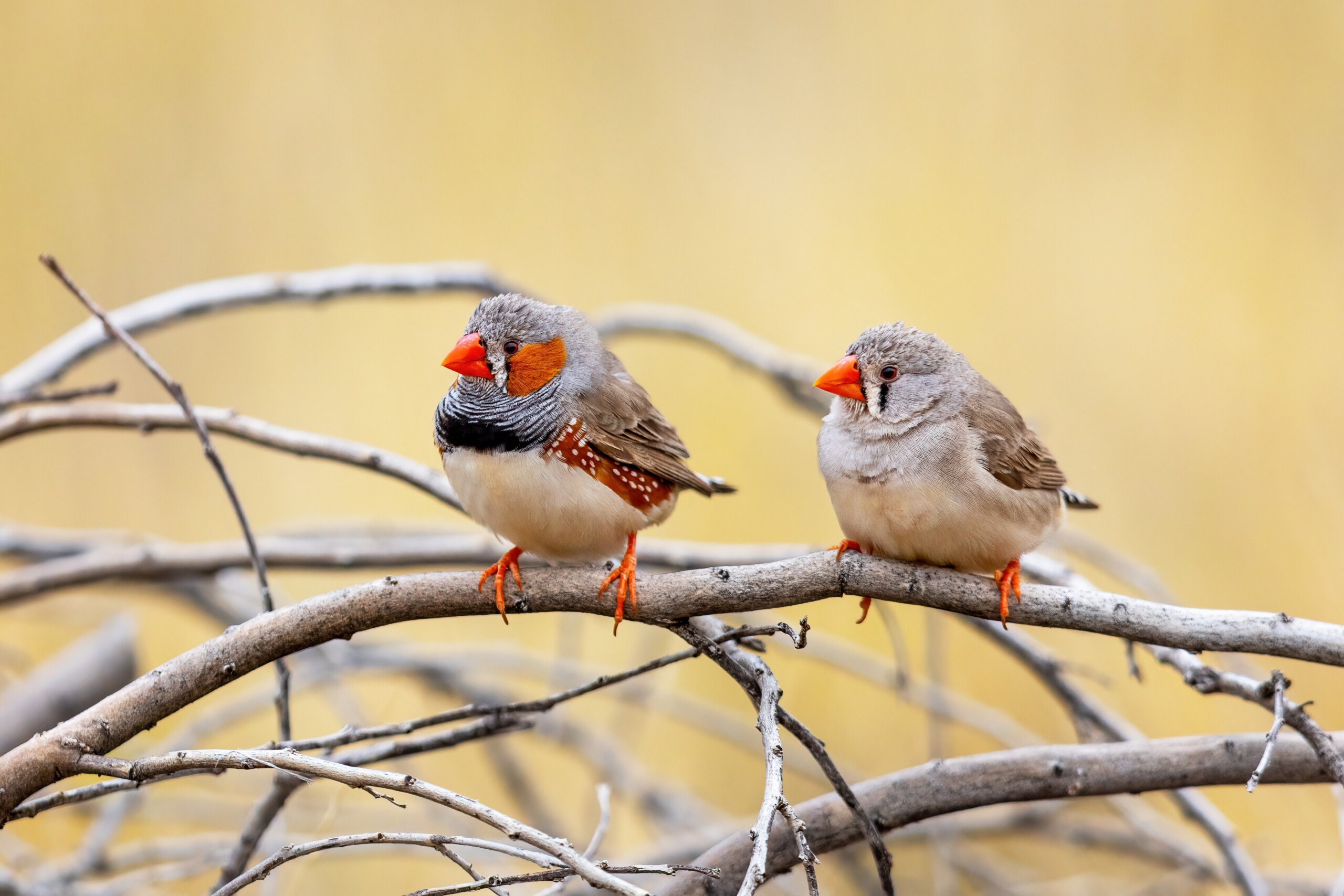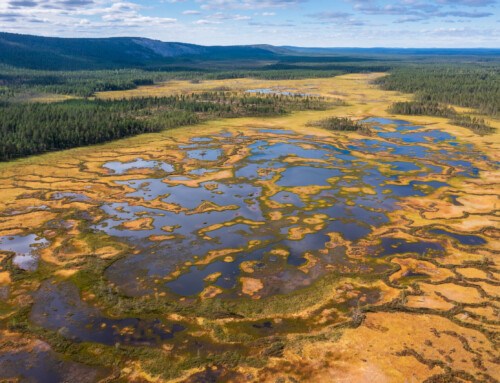
LINKED PAPER
High ambient temperature decreases eggshell thickness in Zebra Finches. Wada, H., Dees, L., Hurley, L. L., Griffith, S. C. 2023. IBIS. DOI: 10.1111/ibi.13216. VIEW
Climate change is recognised as a major threat to birds worldwide, and impacts are already being seen in many species. While some of the characteristics of birds may make them more vulnerable to warming climates, such as their higher costs of cooling compared to mammals (Levy et al. 2016, Riddell et al. 2019), there is also evidence that birds can adjust their breeding and nesting behaviour to mitigate climate effects on offspring. However, whether structural properties of eggs can be adjusted is less well-studied.
In a recent study in Ibis, Haruka Wada and colleagues used an experimental approach in Zebra Finches (Taeniopygia castanotis) to investigate whether eggshell characteristics (pore density and shell thickness) are altered by increased ambient temperatures.
Experimental manipulation of ambient temperature
In their natural environment, Zebra Finches show plasticity in the timing of breeding to breed in both winter and summer temperatures (Griffith et al. 2021), with an average daily temperature of 19oC during breeding (Griffith et al. 2017). However, some populations live in arid regions and experience maximum temperatures above 40oC from October to March (Griffith et al. 2016). In this study, Zebra Finches from a domesticated colony were bred at either 18oC or 30oC, while finches from a wild-derived population were bred at either 18oC or 35oC. For all breeding, the average relative humidity was 50%, with a range 48–52%.
Figure 1. Eggshell thickness (a), coefficient of variation (CV) in shell thickness (b) and pore density (c) in eggs produced by wild-derived Zebra Finches at 18 °C and 35 °C. The figures depict average standard error. Sample sizes for the treatment groups were n = 24 and n = 31 for the 18 °C and 35 °C treatments, respectively. Asterisks denote a statistical significance where P < 0.05.
Altered eggshell characteristics
The results showed that exposure to 35oC, but not 30oC, caused females to lay eggs with thinner shells relative to when breeding at 18oC. Uniformity of shells also decreased at 35oC, which indicated that these eggs had lower-quality eggshells with lower breaking strength (Sun et al. 2012). However, there were no apparent impacts of higher ambient temperatures on eggshell pore density.
The results suggest that the heat treatment imposed a physiological burden on reproductive females, who are already known to have higher resting metabolic rates and body temperature during the energetically costly process of reproduction. Although such heat stress has been shown previously in laying hens, studies in passerines have been more limited, so this study helps to expand our understanding in this field.
Additional studies could measure hatching success alongside eggshell characteristics to assess whether alterations in response to high ambient temperatures impacts offspring survival and performance. Further work to confirm whether there is a threshold for heat stress to modify egg characteristics by exposing the same population to a range of high ambient temperatures could help to predict the future impacts of climate change, and could be used to develop a species-specific predictive model for climate change responses.
References
Griffith, S.C., Mainwaring, M.C., Sorato, E. & Beckmann, C. (2016). High atmospheric temperatures and ’ambient incubation’ drive embryonic development and lead to earlier hatching in a passerine bird. Royal Society Open Science 3: 150371. VIEW
Griffith, S.C., Crino, O.L. & Andrew, S.C. (2017). Commentary: A bird in the house: The challenge of being ecologically relevant in captivity. Frontiers in Ecology and Evolution 5: 1–4. VIEW
Griffith, S.C., Ton, R., Hurley, L.L., McDiarmid, C.S. & Pacheco-Fuentes, H. (2021). The ecology of the Zebra Finch makes it a great laboratory model but an outlier amongst passerine birds. Birds 2: 60–76. VIEW
Levy, O., Dayan, T., Porter, W.P. & Kronfeld-Schor, N. (2016). Foraging activity pattern is shaped by water loss rates in a diurnal desert rodent. The American Naturalist 188: 205–218. VIEW
Riddell, E.A., Iknayan, K.J., Wolf, B.O., Sinervo, B. & Beissinger, S.R. (2019). Cooling requirements fueled the collapse of a desert bird community from climate change. Proceedings of the National Academy of Sciences of the United States of America 116: 21609–21615. VIEW
Sun, C.J., Chen, S.R., Xu, G.Y., Liu, X.M. & Yang, N. (2012). Global variation and uniformity of eggshell thickness for chicken eggs. Poultry Science 91: 2718–2721. VIEW
Image credits
Top right: Male (left) and female (right) Australian Zebra Finch (Taeniopygia castanotis). Kings Canyon, Northern Territory, Australia | JJ Harrison | CC BY-SA 3.0 Wikimedia Commons
Blog posts express the views of the individual author(s) and not those of the BOU.
If you want to write about your research in #theBOUblog, then please see here






